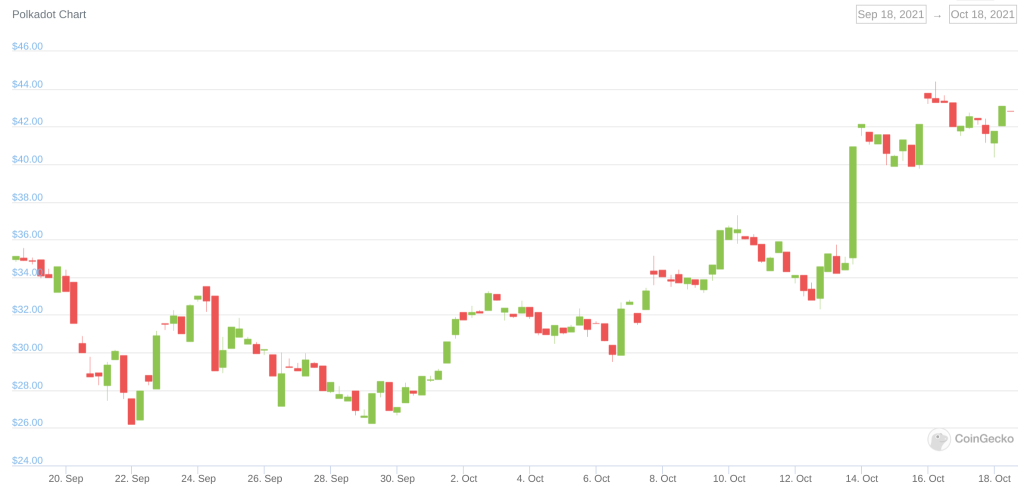Cardano (ADA), Solana (SOL) or even the Binance Smart Chain (BSC): the Ethereum killers have continued to be talked about in recent months. However, the competition could well take another turn with the arrival in force of Polkadot (DOT) .
A strong arrival of the parachains on Polkadot
Polkadot is a blockchain designed by Gavin Wood and Robert Habermeier , 2 former Ethereum contributors. The main objective of Polkadot is to ensure the interoperability of blockchains. This is developed by Parity Technologies , the company behind the eponymous Ethereum client.
Polkadot defines itself as a layer 0 infrastructure, ensuring the security and validation of transactions. This makes it possible to coordinate the different parachains , kinds of first-layer blockchains that are deployed on the network. Each of these parachains has its own ecosystem and its own rules. (Why do we pay fees on Bitcoin (BTC) and Ethereum (ETH)?)
“As the only zero-layer protocol in the blockchain, Polkadot is designed to disrupt the entire Layer 1 protocol landscape for years to come by dramatically reducing the overhead required to secure and connect Layer 1 in the form of parachains. “
Statement by Peter Mauric, Head of Public Affairs at Parity Technologies
Initiated in 2017, Polkadot is a project still in development. This one recently made people talk about him via Kusama (KSM), his so-called “canary” network which acts as a full-scale test network. While the deployment of parachains began on Kusama for several months, the Polkadot network was still on hold.
However, on October 14, Joe Petrowski published a modification proposal aimed at hosting the first auctions of parachains, starting on November 11:
“This is a proposal to schedule the first round of Parachain auctions on Polkadot and to secure Board buy-in to a recommended strategy to schedule auctions on a 3-6 month basis. “
The program therefore offers 2 series of sales:
- A first starting on November 11, for a period of 7 days, during which 5 auctions will be conducted;
- A second scheduled for December 23, still over a period of 7 days with, this time, 6 auctions.
Good news for DOT holders
The Polkadot blockchain has a native token: the DOT. In addition to acting as a governance token, providing decision-making power to its holders, this token allows users to secure the network via a staking module .
Following the announcement of the auction on Polkadot, the token recorded an increase of 17% from 35 to 41 dollars on the night of October 13 to 14. (Bitcoin (BTC) will not be adopted as an official payment method in Mexico)

The increase then continued until it reached $ 44 on October 16 . The price has since returned slightly lower, with a DOT at $ 41.12 as of this writing.
It now remains to be seen whether Polkadot will be able to catch up with the delay encountered with other smart contract blockchains. In addition, these are increasingly interconnected via bridges, creating a new multichain paradigm for the DeFi ecosystem .

